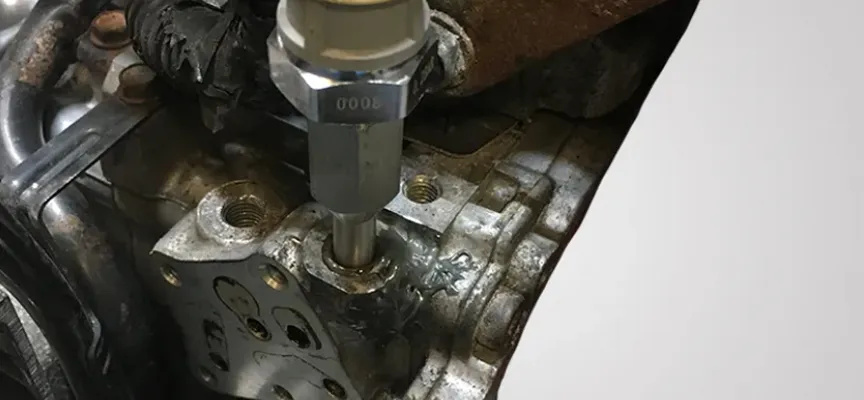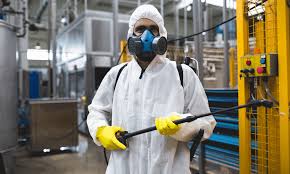Vehicle maintenance is key, and checking for oil leaks is crucial. If you don’t catch these leaks, they can harm your engine. This can lead to expensive repairs.
But how do you spot an oil leak? The signs might be hard to see, but knowing what to look for is important. We’ll show you how to find oil leaks early.
Spotting leaks early is essential for your vehicle’s health. By knowing what to look for, you can avoid engine damage. This keeps your vehicle running well for many years.
Understanding Oil Leaks: Causes and Implications
Spotting oil leaks early can prevent expensive repairs later. Oil leaks can seriously harm your engine if not fixed quickly. Knowing why they happen and how they affect your car is key.
Common Sources of Oil Leaks
Oil leaks often come from worn-out engine gaskets, damaged oil pans, and bad seals. These parts can wear down due to heat, use, and age. For example, hitting a pothole can crack your oil pan.
Common areas where oil leaks occur include:
- The oil pan gasket
- Valve cover gaskets
- Oil drain plug
- Engine block or cylinder head
Signs of an Oil Leak on Your Vehicle
It’s important to know the signs of an oil leak. Look for oil spots, a burning smell, or low oil levels. If you see these signs, check your car to find the leak.
Some other signs to watch out for:
- A decrease in oil level on your dashboard gauge
- Oil residue on engine components
- Unusual engine noises due to insufficient lubrication
Consequences of Ignoring Oil Leaks
Ignoring oil leaks can cause big problems, like engine damage. Without enough oil, parts can overheat and seize. This can lead to expensive fixes or even a new engine. Oil leaks also pose environmental and safety risks.
The potential consequences include:
- Engine failure
- Increased risk of a breakdown
- Potential fire hazard due to oil leaking onto hot engine parts
- Environmental contamination
Tools You Need for Diagnosing Oil Leaks
Fixing an oil leak starts with the right tools and safety gear. You need the right tools and safety steps to check it out safely and right.
Essential Diagnostic Tools
First, you’ll need some key tools to find an oil leak. A flashlight is key for lighting up dark spots under the hood. An inspection mirror lets you see into tight spots. Also, oil leak detection dyes can be mixed with oil to show leaks under UV light.
- A flashlight for better visibility
- An inspection mirror for hard-to-reach areas
- Oil leak detection dyes for identifying leaks
Safety Equipment to Consider
When checking for oil leaks, safety comes first. Protective gloves keep your skin safe from harmful oils and chemicals. Protective eyewear protects your eyes from spills. Also, work in a well-ventilated area to avoid breathing in fumes.
| Safety Equipment | Purpose |
| Protective Gloves | Prevents skin contact with harmful substances |
| Protective Eyewear | Safeguards eyes from chemical splashes |
| Well-Ventilated Workspace | Prevents inhalation of harmful fumes |
With the right tools and safety gear, you’re ready to find oil leaks safely and right. This is crucial for fixing oil leaks in your car.
Step-by-Step Guide to Locating an Oil Leak
Finding an oil leak can seem tough, but with a clear plan, it’s easier. This guide will help you check your car’s engine and parts to find the leak.
Inspecting Engine Components
First, look at the engine’s parts like the cylinder head, engine block, and timing cover. Look for oil drips, drops, or stains. Use a flashlight and mirror to see into dark or hard spots. Also, check for any parts that are worn or damaged.
Key areas to inspect:
- Cylinder head and gasket
- Engine block and seals
- Timing cover and gasket
Checking Oil Filters and Gaskets
Then, check the oil filters and gaskets. A bad oil filter can leak oil. Make sure the filter is tight and look for damage. Also, check the gaskets around the oil filter and engine for wear or damage.
Tips for inspecting oil filters and gaskets:
- Check the oil filter for proper tightening
- Inspect gaskets for signs of wear or damage
- Replace damaged or worn-out parts
Examining Oil Pan and Drain Plug
The oil pan and drain plug often leak oil. Look for damage, rust, or corrosion on the oil pan. Make sure the drain plug is tight and check the gasket for wear or damage.
Steps to examine the oil pan and drain plug:
- Inspect the oil pan for damage or corrosion
- Check the drain plug for proper tightening
- Inspect the gasket for signs of wear or damage
By following these steps, you can find the oil leak and fix it. Regular checks and maintenance can stop leaks and keep your car running well.
Using Visual Cues to Spot Oil Leaks
Spotting an oil leak is easy with visual cues. Knowing what to look for helps you catch leaks early. This can save you from expensive repairs later.
Identifying Oil Stains on Surfaces
Oil leaks show up as stains on surfaces under your car. These stains point to the leak’s source. Look for:
- Dark spots or discoloration on the garage floor or driveway.
- Oil droplets or a sheen on the underside of your vehicle.
- Stains on the engine or surrounding components.
Regularly check these areas for oil stains. A clean garage or parking area makes spotting stains easier.
Observing the Color and Consistency of Oil
The color and consistency of leaking oil give clues about the leak. Fresh oil is light and smooth. Dirty oil is dark and thick.
| Oil Condition | Color | Consistency |
| Fresh Oil | Light Golden | Thin, Smooth |
| Dirty Oil | Dark Brown/Black | Thick, Viscous |
Noticing these differences helps you understand your engine’s health. Dark, dirty oil might mean your oil is old or there’s a bigger engine problem.
By watching for stains and knowing your oil’s condition, you can spot leaks better. This helps prevent bigger engine issues.
The Role of Engine Oil in Leaks
Engine oil is vital for your vehicle’s engine. Its condition affects oil leak chances. The oil’s type, quality, and viscosity are key to engine health and leak risk.
Choosing the right engine oil is more than following the manufacturer’s advice. It’s about keeping your engine well-lubricated and safe from damage. Engine oil comes in various types, each with its own benefits.
Understanding Oil Types and Viscosity
Oil viscosity shows its thickness and how it flows. Thicker oils work better in hot weather, while thinner oils help with cold weather performance. Knowing your vehicle’s oil needs is crucial for its health.
- Conventional oil: Suitable for most passenger vehicles.
- Synthetic oil: Offers superior performance in extreme temperatures.
- Synthetic blend oil: A blend of conventional and synthetic oil, offering a balance between price and performance.
How Worn Oil Can Contribute to Leaks
Engine oil wears out over time due to heat, friction, and dirt. Worn oil loses its lubricating properties and can damage engine parts and seals. This can cause or worsen oil leaks.
Regular oil checks and timely changes can prevent these problems. Using high-quality oil filters is also key. They help keep the oil clean and protect your engine.
Conducting a Pressure Test
A pressure test is a great way to find oil leaks in your car. It works by pressurizing the engine’s cooling system or crankcase. This makes leaks easier to see than they would be normally.
Understanding the Basics of a Pressure Test
A pressure test seals the engine’s cooling system or crankcase and then fills it with air. This pushes oil out of any weak spots or leaks. It’s a common method used by mechanics but can also be done by car owners with the right tools and care.
Step-by-Step Guide to Performing a Pressure Test
To do a pressure test, you need a few special tools. You’ll need a pressure tester kit that fits the engine’s cooling system or crankcase. Here’s a simple guide:
- Make sure your engine is cool before starting to avoid injuries or damage.
- Find the right port on your engine’s cooling system or crankcase for the pressure tester.
- Attach the pressure tester as the manufacturer says.
- Pressurize the system to the right pressure, usually shown on the pressure tester or in your car’s manual.
- Look around the engine and nearby areas for oil leaks.
- Listen for hissing sounds that mean air is escaping from the system.
| Pressure Test Equipment | Purpose |
| Pressure Tester Kit | Attaches to the engine’s cooling system or crankcase to pressurize it. |
| Adapter Fittings | Used to connect the pressure tester to different types of engine ports. |
| Pressure Gauge | Monitors the pressure level in the system. |
By following these steps and using the right tools, you can do a pressure test to find oil leaks in your car. This method is great for spotting leaks that are hard to see. It helps you diagnose and fix problems more quickly.
Seeking Professional Help for Oil Leaks
If you’re having trouble pinpointing the source of an oil leak, it’s time to get a pro’s help. DIY methods can work for a start, but some problems need a mechanic’s skills.
When to Consult a Mechanic
Think about getting a mechanic if you’ve tried to find the leak but can’t. Also, if the leak is big and oil levels drop a lot, or if other parts show wear, see a mechanic.
Spotting oil leak causes needs a deep look. A mechanic has the tools and know-how to find the problem fast. They’ll tell you the best way to fix it.
What to Expect During a Professional Inspection
A mechanic will start by looking at the engine and parts for leaks. They might use special tools like dye tests or pressure tests to find the leak.
After checking, they’ll give you a detailed report. This includes what’s causing the leak, what repairs are needed, and how much it will cost. It’s also a chance to ask questions about the diagnosis and fixes.
Getting professional help means the problem gets fixed right and fast. This can save you from bigger, more expensive repairs later.
Preventative Measures for Oil Leaks
Learning how to stop oil leaks can save you a lot of time and money. By taking care of your vehicle early on, you can lower the chance of oil leaks.
Regular Checks and Maintenance
Regular maintenance is key to avoiding oil leaks. This means checking engine parts often for wear. Inspecting your vehicle’s engine and its components can spot problems early.
Don’t forget to check oil filters and gaskets for damage. Replacing them when needed can stop leaks.
Using Quality Oil and Filters
Choosing the right oil and filters is also important. Quality oil keeps its viscosity well, which helps your engine last longer and leak less.
“The right oil can make all the difference in your vehicle’s performance and longevity.”
Good filters can handle engine pressure better, lowering the chance of leaks.
- Choose oil that meets your vehicle manufacturer’s specifications.
- Select filters from reputable manufacturers.
- Regularly check oil levels and top up as necessary.
By taking these steps, you can greatly lower the risk of oil leaks. This keeps your vehicle running well for many years.
The Cost of Ignoring Oil Leaks
Ignoring oil leaks can lead to big financial losses and harm your vehicle’s future. It’s important to spot and fix oil leaks early to avoid expensive repairs and engine damage.
Repair Costs and Engine Damage
Oil leaks can cause a lot of damage if not fixed. Without enough oil, engine parts wear out fast. This can lead to serious engine problems. Catching oil leaks early can prevent these issues.
Long-term Consequences
Ignoring oil leaks can also cause long-term damage. It can lead to corrosion and wear down engine parts. Fixing oil leaks quickly can help your vehicle last longer and save you money on repairs.
Knowing why oil leaks happen and how to fix them is key. By following this guide, you can keep your vehicle in good shape. This way, you can avoid the high costs of neglecting oil leaks.
FAQ
What are the common signs of an oil leak in my vehicle?
Signs include oil spots under your car, a burning smell, and low oil levels. You might see oil stains on the engine or nearby surfaces.
How can I diagnose an oil leak?
To find an oil leak, check engine parts, oil filters, and gaskets. Look at the oil pan and drain plug too. Oil leak detection dyes can also help find the leak’s source.
What tools do I need to detect an oil leak?
You’ll need flashlights, mirrors, and oil leak detection dyes. Don’t forget gloves and protective eyewear for safety.
Can I perform a pressure test on my vehicle to detect oil leaks?
Yes, a pressure test can pressurize the engine to find leaks. It’s good for spotting leaks that aren’t easy to see.
When should I seek professional help for an oil leak?
If you’re not sure about the leak or how to fix it, get a mechanic’s help. They have the right tools and know-how.
How can I prevent oil leaks?
Regular checks and using quality oil and filters can help. Fixing leaks quickly is also key.
What are the consequences of ignoring an oil leak?
Ignoring a leak can damage your engine badly. This can lead to expensive repairs or even engine failure. Fixing leaks fast is crucial.
How does engine oil type and viscosity impact oil leaks?
The right oil type and viscosity matter. Wrong oil can lead to leaks. Regular oil changes are important.
Can visual cues help me spot oil leaks?
Yes, oil stains and the oil’s color and texture can hint at leaks. Fresh oil is light, while dirty oil is darker and thicker.
What is the financial impact of oil leaks?
Oil leaks can cost a lot, with expensive engine repairs. Fixing leaks quickly can save money.
Read More From Techbullion



































